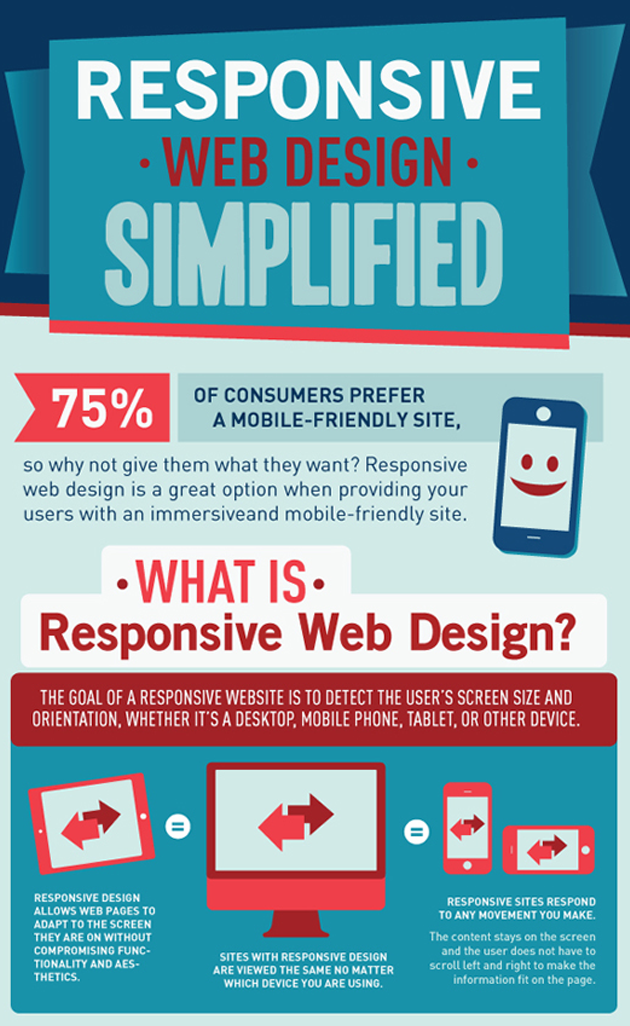Web Site Design Basics: Tips For Structure A User-Friendly Website
Web Site Design Basics: Tips For Structure A User-Friendly Website
Blog Article
Web Content Writer-Wiley Thrane
When it concerns internet site style, making sure user-friendliness is vital. From responsive design to streamlined navigation, every component plays an important duty in creating a site that deals with your audience's requirements. But what about the better details that can make or break a customer's surfing experience? Keep tuned as b2b website design uncover some often-overlooked pointers that can raise your internet site's use to the following level, making it absolutely attract attention in the digital landscape.
Significance of Responsive Layout
Responsive style is an important facet of modern-day site advancement. Guaranteeing your site is receptive methods that it can adapt to various screen dimensions and devices, supplying a smooth experience for users.
With the boosting use mobile phones and tablets to access the web, having a receptive design is crucial for reaching a larger audience. It helps in improving user experience by making your website easy to browse and continue reading any tool.
Furthermore, responsive design can favorably impact your internet search engine rankings, as internet search engine like Google prioritize mobile-friendly websites. By having a receptive design, you're likewise future-proofing your site, as new gadgets with varying display dimensions continue to emerge.
Simplify Navigation Structure
To improve user experience and facilitate very easy accessibility to details on your site, streamlining the navigating framework is vital. When designing https://www.fool.com/the-ascent/small-business/marketing-automation/articles/digital-marketing-for-small-business/ , focus on creating a clear and user-friendly navigating menu that helps site visitors find what they're seeking rapidly.
Limit the number of food selection items to the essentials, organizing associated web pages together to avoid overwhelming individuals. Usage detailed labels that plainly indicate the material of each web page, making it easier for customers to recognize where each web link will certainly take them.
Take into consideration executing dropdown menus for subcategories to prevent cluttering the major navigating bar. Furthermore, include a search bar prominently on the web page for individuals who favor searching for particular details.
Focus on mobile responsiveness in your navigation layout to guarantee simple accessibility on all devices.
Optimize Web Page Lots Rate
Improving page load speed is essential for preserving visitors on your internet site. Slow-loading web pages irritate customers and can cause high bounce rates. To maximize web page load rate, begin by optimizing pictures. visit this site without jeopardizing top quality to decrease their file sizes.
Furthermore, make it possible for web browser caching to store often accessed resources in your area, speeding up tons times for returning site visitors. Minify CSS, JavaScript, and HTML documents by getting rid of unneeded personalities, remarks, and formatting, enhancing load rate.
Think about making use of a web content shipment network (CDN) to distribute your site's content across numerous servers worldwide, lowering latency for customers accessing your site from various locations. Lastly, limit making use of third-party manuscripts and plugins, as they can significantly affect tons times.
Verdict
Finally, by incorporating responsive layout, simplifying navigating, and maximizing web page tons rate, you can develop a straightforward web site that attract a wider target market and enhances individual experience. These essential elements make sure that site visitors can quickly gain access to and navigate your site throughout various gadgets, causing boosted involvement and contentment. By concentrating on these crucial aspects, you can construct an effective web site that keeps customers coming back for more.
